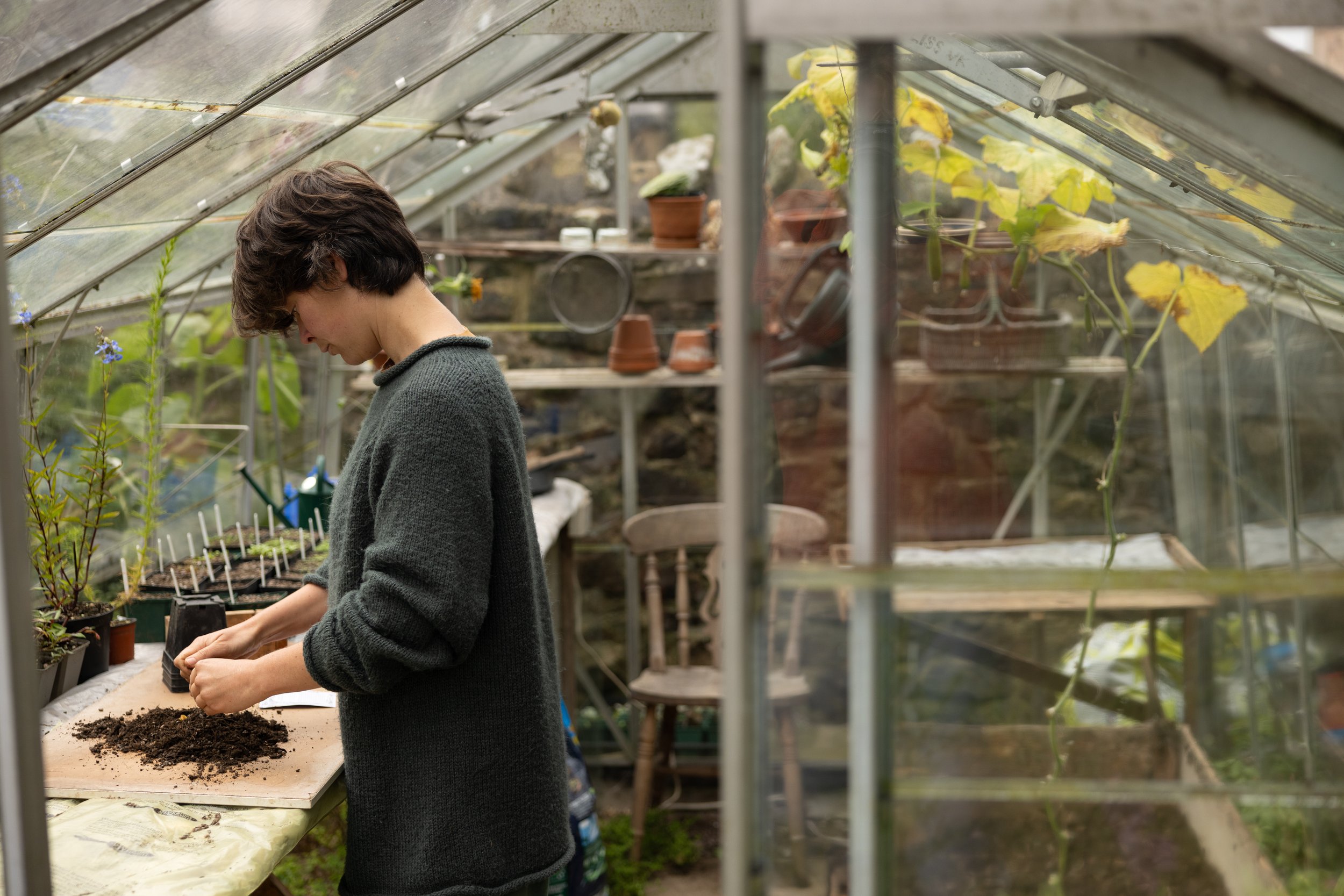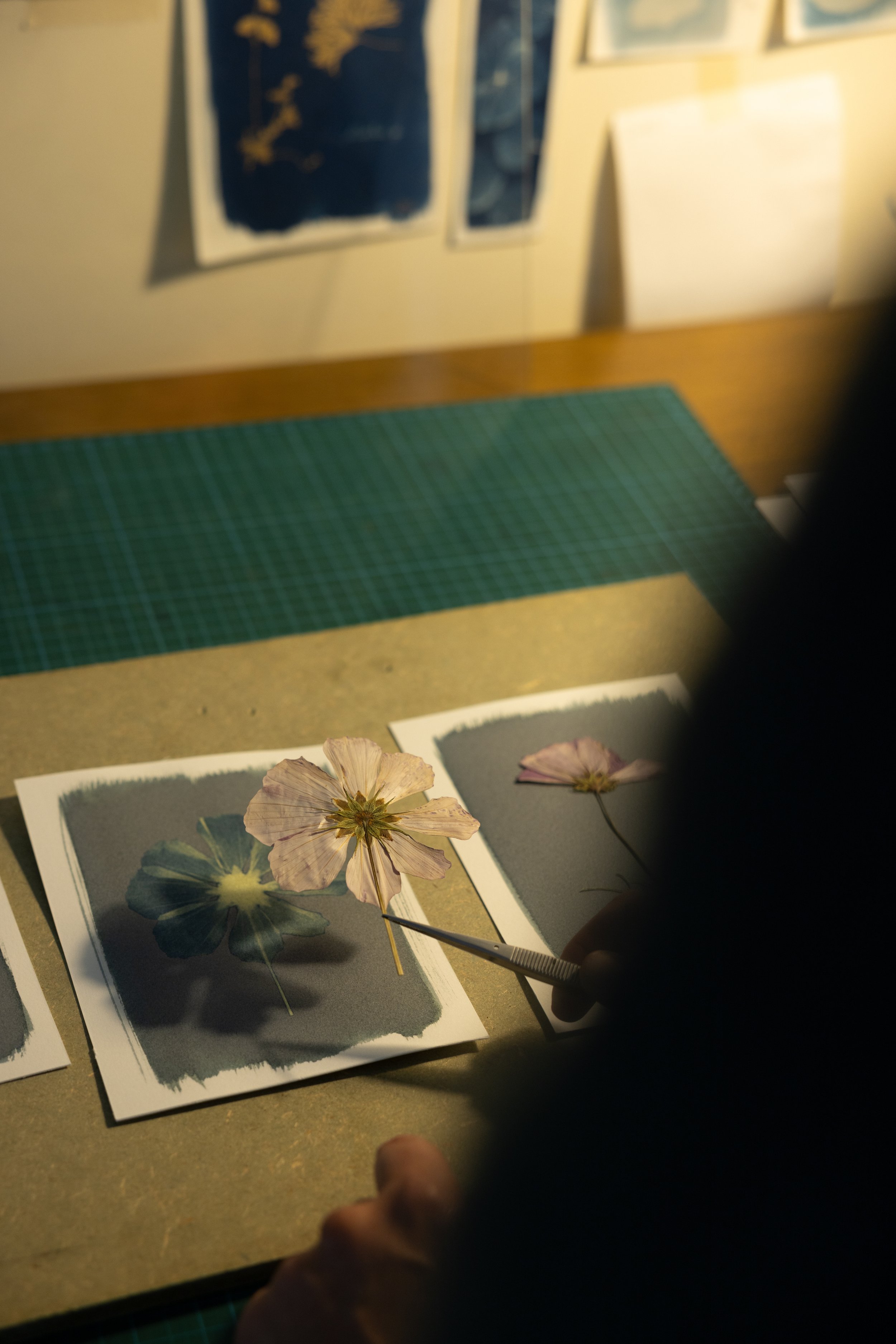My work follows several main themes; the herbarium style which includes the botanical name of the plant and recalls the work of Anna Atkins, one of the forerunners of cyanotype images; figurative and ecologically informed landscape pieces; and more abstract pieces which focus on the beauty of the form and texture of the plant itself.
I use heavy weight, archival paper which contains a calcium carbonate buffer to protect the finished piece from acids present in atmospheric pollution. This paper is made from 100% cotton which gives the finished pieces a wonderful textural quality.
After the cyanotype exposure, I add gold details to the piece to highlight parts of the plant. This gold carries an iridescent shimmer which compliments the intense Prussian blue of the cyanotype image.
My Background
I gained a distinction for my Art Foundation Diploma in Nottingham where I learnt the cyanotype process. I went on to achieve a First Class BSc in Environmental Science at Aberystwyth University, after which I studied horticulture for three years and gained a commendation for my Royal Horticultural Society Level 3 qualification. I was assistant nursery manager at Great Dixter Nurseries in East Sussex for two years before moving back to Derbyshire to focus on my creative work. My educational background in both the visual arts and the natural sciences continues to inform my work.
My Process
The plants in each piece were grown at my home in Derbyshire or collected intentionally on walks, then pressed for several weeks before being used to make a cyanotype. My horticultural and ecological education informs which plants and compositions might work in this process, and plants are selected for their form, texture, transparency and meaning. Pressing the plants also serves to preserve them, and are added to my herbarium so that they may be used again.
The Cyanotype Process
The cyanotype process involves mixing two iron compounds together, ferric ammonium citrate and potassium ferricyanide, to form a photosensitive emulsion. This emulsion is then painted onto the paper and left to dry in the darkroom, forming the photosensitive paper. Once dry, the plant material is placed onto the paper and brought out into the direct sunlight, exposing the paper which is not covered by the plant to UV light. The plant is then removed and the paper is fixed in water where it turns blue and the image of the plant remains.
The cyanotype process was first introduced by the chemist John Herschel in 1842. It was made famous by Anna Atkins in 1843 with the publication of her book ‘Photographs of British Algae: Cyanotype Impressions’. Atkins was a talented illustrator, but wanted to find a more accurate way to depict the structure of a plant. Cyanotypes as a photographic technique have been superseded by film photography and digital photography, and is now largely used as an artist’s technique.










